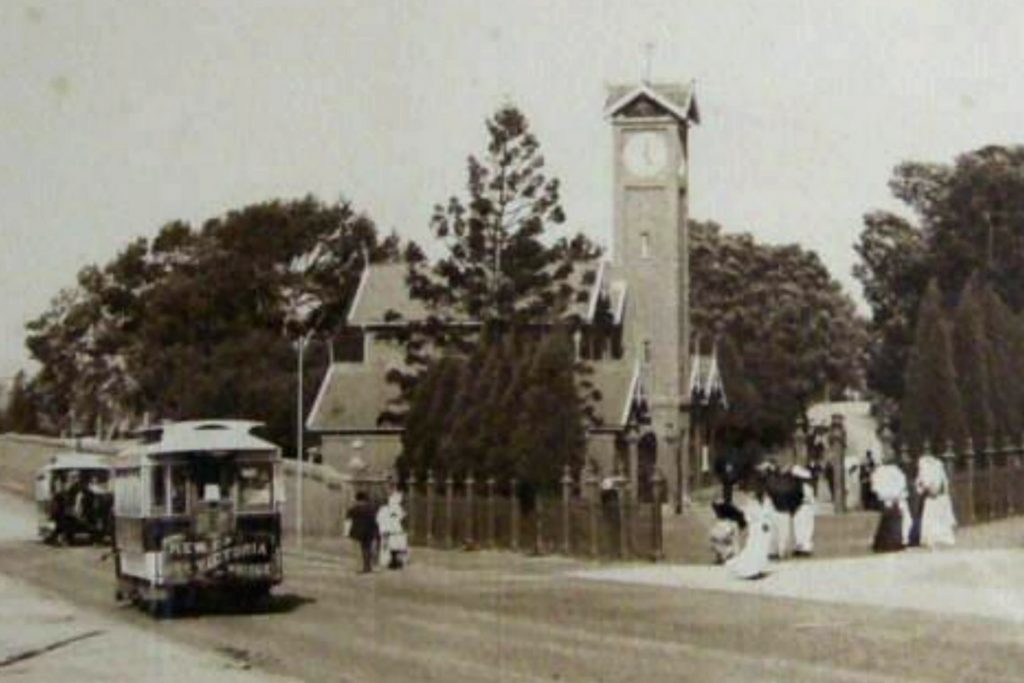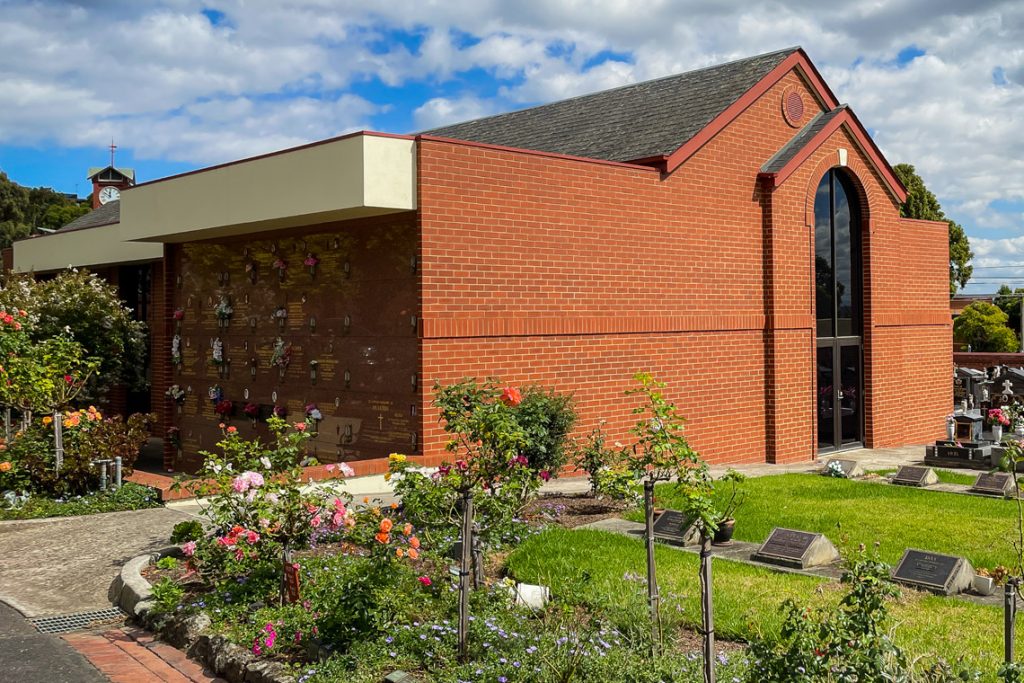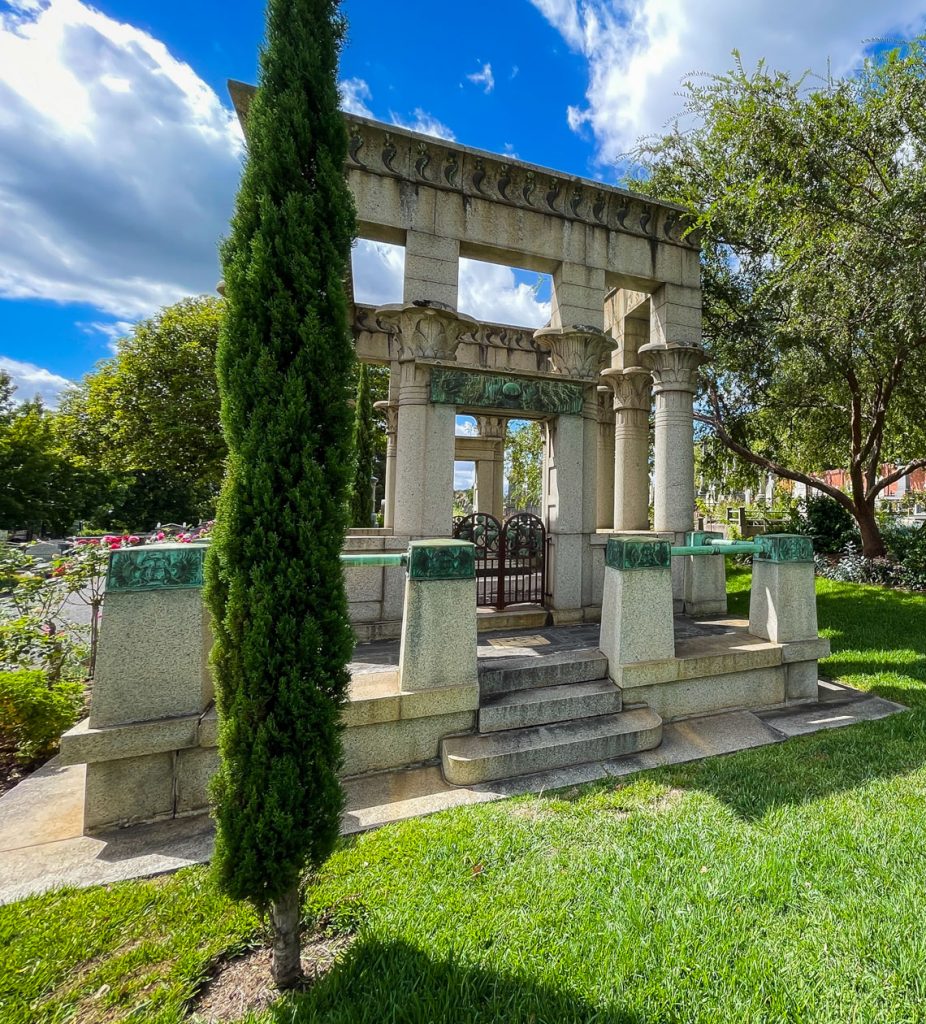History
Boroondara is an aboriginal word meaning ‘a place of shade’. This aptly describes the beautiful gardens in the Boroondara Cemetery. Originally covered in red gums and wattles, the cemetery was designed to have the park-like setting of a Victorian garden cemetery.
Our Beginnings
In 1855, 12.5 hectares (31 acres) of land were reserved for a cemetery. Three years later the first Boroondara Cemetery Trustees were appointed. They commissioned Frederick Acheson, a civil engineer in the Public Lands Office to draw up plans for the grounds, gates and fencing.
The first burial, that of Ellen Quick (nee Derrick) took place the same year.
In the next two years rapid progress was made with the construction of a two-roomed brick cottage, and the laying out of the grounds by J.J. Higgins. Soon afterwards Albert Purchas, architect and surveyor to the Melbourne General Cemetery, joined the Trust and in the ensuing years designed much of the botanic ornamentation and landscaping, cast iron entrance gates, (possibly) the rotunda, the 2.7 metre high ornamental brick fence and additions to the brick cottage including the clock tower.
From 1887, the terminus of a horse tram was located at the cemetery gates. Twenty years later this tram terminus was used as the place of disembarkation for sightseers to the famous Springthorpe memorial, once described as “the finest thing in the Southern Hemisphere”.


Expansion
Over the years, the original design of the cemetery has been sensitively altered to respond to the demand for additional burial sites. In the 1950s, columbarium walls were added for the interment of ashes, and in the first decade of this century the “Peace Haven” Mausoleum was constructed for burials and ashes interments.
A beautiful rose garden interment area has been created in the area just inside the main gate, and the newest addition to the cemetery is the award winning garden crypt area designed by McIntyre Partnership.
Notable People Buried In The Cemetery
Hundreds, or even thousands, of people who have made major historical contributions to Melbourne are buried in the cemetery. Here are only some of them:
Ellen Quick (?-1859): The first person buried at the cemetery, Ellen was from an early pioneering family in Kew who at one time owned the entire triangle of land bounded by Cotham Road and High Street from the Kew post office almost to Ridgeway Avenue.
Alice Anderson (1897-1926): Founder of the first all-women garage workshop in Australia, who was posthumously inducted into the Victorian Honour Roll of Women on International Women’s Day, March 8, 2020.
David Syme (1827-1908): Joint proprietor of “The Age”, who lived and died in Kew. The Syme memorial, one of the most prominent in the cemetery, was modelled on the Temple of Isis at Philae in Egypt.
Annie Springthorpe (1867-1897): A young mother whose grieving husband Dr John Springthorpe built the spectacular Springthorpe Memorial in her memory. The memorial designed by architect Harold Desbrowe Annear, with sculptures designed by Bertram Mackennal and landscape design by William Guilfoyle of the Melbourne Botanic Gardens.
Albert Purchas (1822-1909): Architect-surveyor for the village of Hawthorn, who made an immense contribution to the design of the Kew cemetery.
Henry Colden Antill Harrison (1836-1929): ‘Father’ of Australian Rules Football.
Sir Owen Dixon (1886-1972): A diplomat and judge of the Australian High Court widely regarded as Australia’s greatest ever jurist.
Louis Buvelot (1814-1888): A leading landscape painter of the Heidelberg School.

